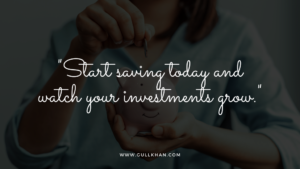Do you ever feel overwhelmed by the challenges of life? Do you find yourself worrying about the future and struggling to let go of negative thoughts and emotions? If so, you’re not alone. Many of us experience these feelings at some point in our lives. But what if there was a way to release our burdens and find peace, joy, and abundance? In this post, we will explore the power of surrendering our worries and fears to a higher power – Divine Source Energy – and trusting that everything will work out for our highest good.
What is Divine Source Energy?
Before we can understand how to tap into the power of Divine Source Energy, we must first define what it is. Divine Source Energy is a concept that has been recognized by many different cultures and belief systems throughout history. Some call it the universe, others refer to it as God, and still, others describe it as an all-encompassing life force energy that is present in all things.
At its core, Divine Source Energy is the energy that connects all of us to each other and to the universe. It is the energy that gives life to all things and provides the spark that drives us forward in our lives.Ultimately, the power of Divine Source Energy is available to all of us. By opening ourselves up to this energy and trusting in the wisdom of the universe, we can find peace, joy, and abundance in our lives. We can overcome obstacles and challenges and create a reality that aligns with our deepest desires.
Tapping into the Power of Divine Source Energy
One of the most powerful ways to tap into the power of Divine Source Energy is through meditation. By quieting our minds and focusing on the present moment, we can connect with this energy and experience a sense of oneness with the universe. This allows us to release our worries and fears and allow ourselves to be guided by the wisdom of the universe. It can also help us to develop a deeper sense of intuition and to connect with our inner wisdom.
Visualization is another effective tool for tapping into the power of Divine Source Energy. By creating a mental image of our desired outcome and focusing on the positive emotions associated with that outcome, we can attract positive energy into our lives. This technique can be particularly effective in manifesting our desires and creating a reality that aligns with our deepest desires. By visualizing our goals and dreams, we can attract the right people, opportunities, and circumstances into our lives to help us achieve them.
Prayer is another way to tap into the power of Divine Source Energy. By expressing gratitude for the blessings in our lives and asking for guidance and support, we can connect with the divine and receive the help we need to overcome obstacles and challenges. Prayer can also help us to cultivate a sense of peace and serenity, and to develop a deeper sense of faith and trust in the universe.
Letting Go of Negative Emotions and Beliefs
Negative emotions and beliefs can weigh us down, making it difficult to connect with Divine Source Energy. They can cause us to feel stuck, anxious, and uncertain, preventing us from experiencing the abundance and joy that life has to offer. That’s why it’s important to let go of these negative emotions and beliefs and replace them with positive ones.
One effective way to release negative emotions is through journaling. Writing down your thoughts and feelings can help you gain clarity and perspective on the situation. It can also help you identify any patterns or beliefs that may be holding you back. By acknowledging these negative emotions and beliefs, you can begin to let go of them and create space for positivity to flow in.
 Another useful tool for letting go of negative emotions and beliefs is affirmations. Affirmations are positive statements that you repeat to yourself to create a new belief or perspective. For example, if you struggle with feelings of unworthiness, you could repeat the affirmation, “I am worthy of love and abundance.” By repeating this affirmation regularly, you begin to shift your mindset and replace negative beliefs with positive ones.
Another useful tool for letting go of negative emotions and beliefs is affirmations. Affirmations are positive statements that you repeat to yourself to create a new belief or perspective. For example, if you struggle with feelings of unworthiness, you could repeat the affirmation, “I am worthy of love and abundance.” By repeating this affirmation regularly, you begin to shift your mindset and replace negative beliefs with positive ones.
Forgiveness exercises can also be helpful in releasing negative emotions and beliefs. When we hold onto grudges and resentments, we create a negative energy that can impact our well-being and relationships. By forgiving ourselves and others, we release this negative energy and open ourselves up to love and positivity. This doesn’t mean that we condone or excuse hurtful behavior, but rather that we release the negative emotions that are holding us back.
By letting go of negative emotions and beliefs, we create space for positive energy to flow in. We open ourselves up to new possibilities and opportunities, and we become more receptive to the guidance and inspiration of Divine Source Energy. So take some time to reflect on any negative emotions or beliefs that may be holding you back, and begin to release them through journaling, affirmations, or forgiveness exercises.
Applying Divine Source Energy to Specific Challenges
When faced with a specific challenge, it’s important to remember that Divine Source Energy is always available to us. By using the power of this energy, we can tap into an infinite source of wisdom, guidance, and support.
For example, let’s say you’re experiencing financial struggles. Perhaps you’ve lost your job, or unexpected expenses have left you feeling overwhelmed. Instead of allowing fear and stress to take over, you can use Divine Source Energy to find a solution.
One way to apply Divine Source Energy to financial challenges is to visualize abundance and prosperity. Take some time to sit in a quiet space and envision yourself in a state of financial abundance. See yourself with all the money you need to live a comfortable life, and feel the emotions associated with this abundance. As you do this, you are sending out a powerful signal to the universe that you are ready to receive financial abundance.
 Another way to apply Divine Source Energy to specific challenges is through prayer. When we pray, we are opening ourselves up to the wisdom and guidance of a higher power. By asking for help and guidance, we are surrendering our fears and worries and allowing Divine Source Energy to work on our behalf.
Another way to apply Divine Source Energy to specific challenges is through prayer. When we pray, we are opening ourselves up to the wisdom and guidance of a higher power. By asking for help and guidance, we are surrendering our fears and worries and allowing Divine Source Energy to work on our behalf.
If you’re struggling with a difficult relationship, you can use Divine Source Energy to create a positive outcome. Instead of focusing on what’s wrong with the relationship, focus on what you want to see happen. Envision yourself in a loving, supportive relationship and feel the emotions associated with this vision. As you do this, you are sending out a powerful signal to the universe that you are ready to receive a positive outcome in your relationship.
In the case of health issues, Divine Source Energy can be used to promote healing and well-being. By visualizing yourself in a state of perfect health, you are sending a powerful message to your body that it is capable of healing itself. Combine this with proper medical care and a healthy lifestyle, and you can give yourself the best possible chance of overcoming any health challenge.
Conclusion
 In our fast-paced, modern world, it’s easy to get lost in the chaos and lose sight of the bigger picture. We can become overwhelmed by the challenges and struggles that we face in our daily lives. It’s in these moments that we need to remember the power of Divine Source Energy and the transformative effect it can have on our lives.
In our fast-paced, modern world, it’s easy to get lost in the chaos and lose sight of the bigger picture. We can become overwhelmed by the challenges and struggles that we face in our daily lives. It’s in these moments that we need to remember the power of Divine Source Energy and the transformative effect it can have on our lives.
As we’ve discussed in this post, tapping into the power of Divine Source Energy can be done through various practices, including meditation, visualization, and prayer. By quieting our minds and focusing on the present moment, we can connect with this universal life force energy and access its infinite potential.
But accessing Divine Source Energy is only the first step. We must also learn to let go of negative emotions and beliefs that can hold us back from living our best lives. By using techniques such as journaling, affirmations, and forgiveness exercises, we can release these limiting beliefs and replace them with positive ones that align with our desires.
Once we’ve cleared the way for positive energy to flow in, we can apply the power of Divine Source Energy to any challenge we face in life. Whether it’s a difficult relationship, financial struggles, or health issues, we can focus on positive outcomes and visualize success, creating a reality that aligns with our desires.
In conclusion, surrendering our worries and fears to Divine Source Energy can be a transformative experience that brings peace, joy, and abundance into our lives. So why not try the practical exercises discussed in this post and start tapping into the power of Divine Source Energy today? The journey may not be easy, but the rewards are immeasurable.



 By facing these fears and taking calculated risks, individuals can overcome these obstacles and move closer towards financial freedom. Learning to manage and mitigate risk, understanding that failure is a natural part of the process, and preparing for uncertainty can all help alleviate anxiety and give individuals the confidence to pursue their financial goals.
By facing these fears and taking calculated risks, individuals can overcome these obstacles and move closer towards financial freedom. Learning to manage and mitigate risk, understanding that failure is a natural part of the process, and preparing for uncertainty can all help alleviate anxiety and give individuals the confidence to pursue their financial goals.

 In conclusion, financial success is not just about luck or chance; it requires a proactive and disciplined approach. Overcoming the fear of failure, risk, and uncertainty, developing a strong money mindset, and creating a personalized financial plan are essential steps towards achieving financial freedom.
In conclusion, financial success is not just about luck or chance; it requires a proactive and disciplined approach. Overcoming the fear of failure, risk, and uncertainty, developing a strong money mindset, and creating a personalized financial plan are essential steps towards achieving financial freedom.
 To create a budget, start by tracking your expenses for a month or two. This will give you a good idea of where your money is going and help you identify areas where you can cut back. Once you have a clear picture of your spending habits, you can create a budget that reflects your financial goals.
To create a budget, start by tracking your expenses for a month or two. This will give you a good idea of where your money is going and help you identify areas where you can cut back. Once you have a clear picture of your spending habits, you can create a budget that reflects your financial goals.

 In conclusion, saving money for investment is an essential step towards achieving financial stability and reaching your long-term financial goals. With these ten tips, you can start building your investment portfolio and working towards your financial future. Remember, it’s never too late to start saving and investing, and every small step you take can make a big difference in the long run.
In conclusion, saving money for investment is an essential step towards achieving financial stability and reaching your long-term financial goals. With these ten tips, you can start building your investment portfolio and working towards your financial future. Remember, it’s never too late to start saving and investing, and every small step you take can make a big difference in the long run.